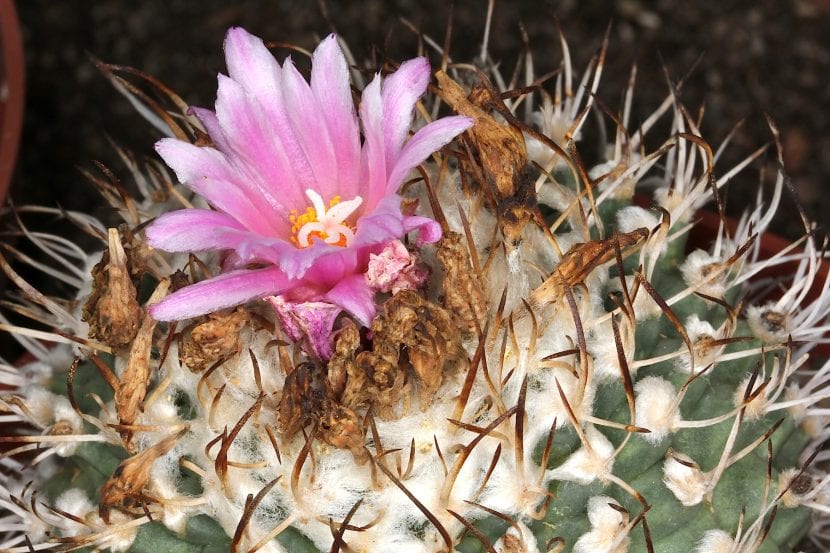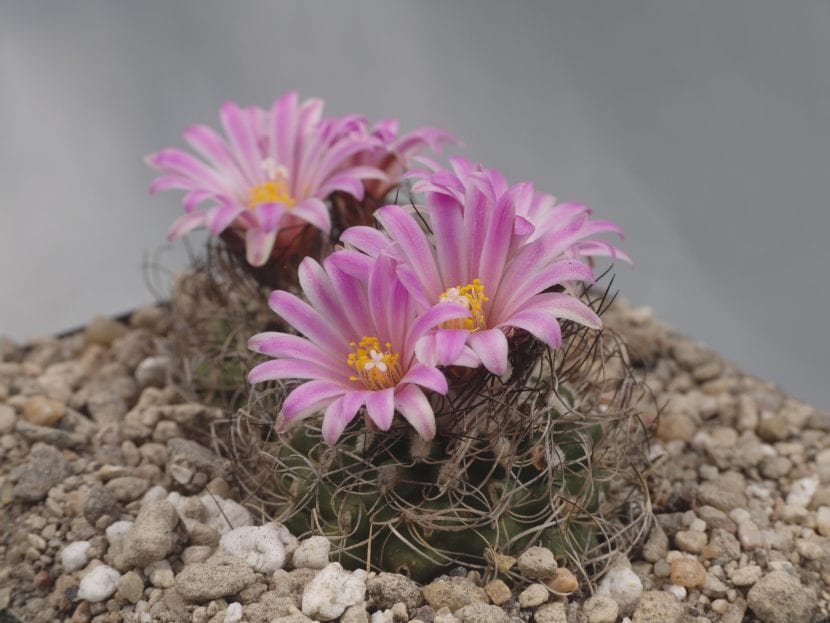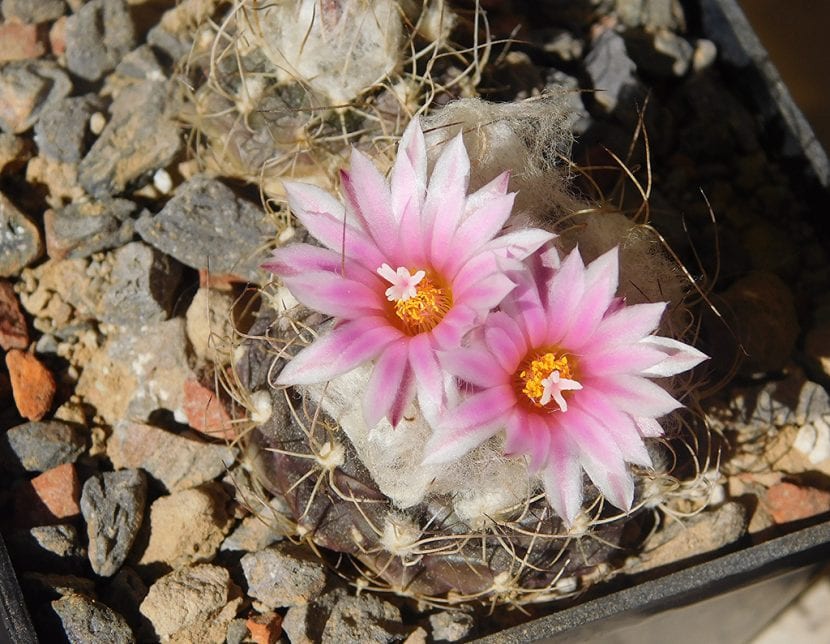
Turbinicarpus alonsoi
Do you like small cacti, those that you can grow in a pot throughout your life? In that case, sure you will love the Turbinicarpus. These little plants, which barely reach a height of ten centimeters, produce highly decorative flowers.
Its growth rate is quite slow and its cultivation, very simple; so much so that even if you don't have much experience, you will probably be pleasantly surprised with them.
Origin and characteristics of the Turbinicarpus

Turbinicarpus pseudomacrochele ssp lausseri
These plants They are native to the northeast of Mexico, specifically from the states of San Luis Potosí, Guanajuato, Nuevo León, Querétaro, Hidalgo, Coahuila, Tamaulipas and Zacatecas. They are more or less globular in shape, with a fleshy body protected by long, curved spines. They produce flowers during practically all the warm months. Its roots are shallow, although species that live in dry and exposed regions have a very thick taproot.
It is an endangered genus of cactusTherefore, you can only buy specimens that have passed all CITES controls (International Trade in Endangered Species of Wild Fauna and Flora).
What care do you need?

Turbinicarpus laui
If we finally get some legal specimens in specialized nurseries, we can provide them with the following care to enjoy them for a long time:
- Location: outside, in full sun.
- Irrigation: very scarce. In summer, one watering per week will suffice; the rest of the year we will water it every 15 or 20 days.
- Subscriber: in spring and summer we will pay it with a liquid fertilizer for cactus following the instructions specified on the package.
- Substratum: it has to be very porous, like washed pomx or river sand.
- Transplant: as soon as we buy it, in spring, we will transfer it to a pot no more than 10,5cm wide.
- Pests: can be affected by mealybugs y snails. Both pests can be treated for example with diatomaceous earth, which we will find for sale in online stores.
- Multiplication: by seeds in spring. They are sown directly in a seedbed with vermiculite, which has to remain slightly damp. They will germinate in 1-2 months.
- Rusticity: it supports mild and brief frosts of up to -2ºC, but needs protection against hail.
Have you ever seen these cacti?